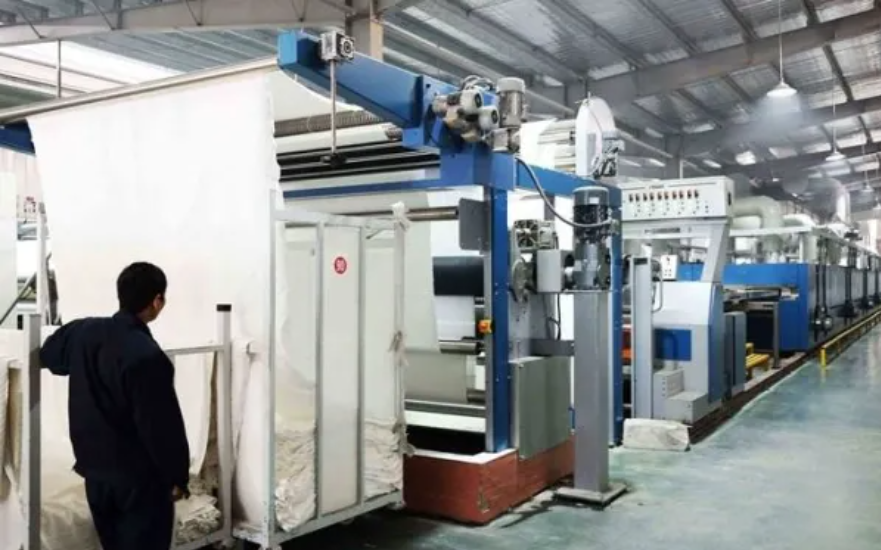Heat setting process
The most common reason for heat setting is to achieve the dimensional stability of a yarn or fabric containing thermoplastic fibers. Heat setting is a heat treatment that gives fibers shape retention, wrinkle resistance, resilience and elasticity. It also changes strength, stretchability, softness, dyeability, and sometimes the material’s color. All these changes have a relationship with the structural and chemical modifications that occur in the fiber. Heat setting also reduces the tendency to develop creases in fabric, such as washing and hot ironing. That is a critical point for garment quality.
Heat setting is running at a high temperature, usually with hot water, steam, or dry heat. The choice of the heat setting method depends on the textile material itself and the desired setting effect, and of course very often on the equipment available, which means the relaxation of tensions within the textile material results in shrinkage.

The heat setting process is only used on synthetic fabrics such as polyester, polyamide, and other blends to make them dimensionally stable against subsequent hot operations. Other benefits of heat setting include minor fabric wrinkling, less fabric shrinkage, and reduced pilling tendency. The heat setting process involves subjecting the fabric to dry hot air or steam heating for several minutes and then cooling it down. The heat setting temperature is usually set above the glass transition temperature and below the melting temperature of the material comprising the fabric.
Polyester and polyamide fabric can be heat treated to remove the internal tensions within the fibers. These tensions are usually formed during production and further processing, such as weaving and knitting. The new relaxed state of fibers is fixed (or set) by rapid cooling after the heat treatment. Without this setting, the fabrics may shrink and wrinkle during later washing, dyeing, and drying.
Heat setting stages
Heat setting can be performed at three different stages in a processing sequence: in grey condition, after scouring and after dyeing. The stage of heat setting depends on the extent of contaminations and types of fibers or yams present in the fabric. For example, If the heat setting is after dyeing could lead to the sublimation of dispersed dyes (if not accurately selected).
1, Heat setting in grey condition is useful in the warp knit industry for materials that can only carry a small amount of lubricant and for products that need to be scoured and dyed on beam machines. Other benefits of grey heat setting are: yellow color due to heat setting can be removed by bleaching, the fabric is less likely to wrinkle during further processing, etc.
2, Of course, heat setting can be performed after scouring process if you worry that the goods will shrink or for the fabric in which stretch or other properties is developed during a carefully controlled scouring process. However, this stage requires drying the fabric twice.
3, Heat setting also can be performed after dyeing. Post set fabrics show considerable resistance to stripping compared with the same dyeing on unset fabric. The disadvantages of post setting are: yellow color developed cannot be removed anymore by bleaching, the handle of the fabric may change, and there is a risk of colors or optical brighteners may faded somewhat.
If you have any question or requirement on the heat setting process, welcome to contact us. Fuzhou Huasheng Textile., Ltd is committed to providing the high quality fabric and best service to the customer worldwide.
Post time: Jan-26-2022